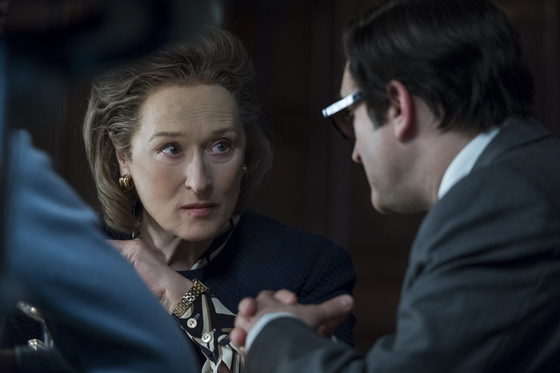In 1971, the White House was overturned when a classified first-class document from the US Department of Defense was exposed. From Harry Truman to John F. Kennedy to Lyndon Johnson, the secrets of the’Vietnam War’ that the US presidents have been hiding for the past 30 years are revealed at once. Extensive documents contain the fact that the US directly intervened in the Vietnam War and even “manipulated the case” to build a justification. It is the so-called’Pentagon (U.S. Department of Defense) paper’.

A scene from the movie’The Post’. Official Still Cut
In the 2017 film “The Post,” actors Meryl Streep and Tom Hanks played the publisher and editor-in-chief of the Washington Post (WP), who wondered whether to report it under government pressure. Thanks to this film, WP’s activities became more publicly known, but in fact, Neil Shihan, 84, a reporter of The New York Times (NYT), was the first to reveal the secret to the world.
![The obituary article of Neil Shihan, a reporter who made a special report on'Pentagon Paper'. [뉴욕타임스 캡쳐]](https://i0.wp.com/pds.joins.com/news/component/htmlphoto_mmdata/202101/08/f5bdab68-fdf8-48db-9303-36a8f6f806b9.jpg?w=560&ssl=1)
The obituary article of Neil Shihan, a reporter who made a special report on’Pentagon Paper’. [뉴욕타임스 캡쳐]
NYT reported on the news of Neil Shihan’s death on the 7th (local time) and introduced that he was the first journalist in the history of the United States to have tried to ban reporting by the government. According to Neil’s family, he suffered from Parkinson’s disease and died at home that day. NYT described him as “a person who won the Pulitzer Prize and the National Book Award for a special report.”
Neil, who served in the US Army in 1959-62, was also deployed in Korea and Japan. While serving in Japan, he started working as a reporter at UPI’s Tokyo office. After he was discharged, he was dispatched to Saigon, Vietnam to cover the Vietnam War.

Neil Shihan’s appearance when the New York Times reported on the Pentagon Paper. NYT capture
After moving to NYT in 1964, he came to report on the Vietnam War again after meeting Daniel Elsberg, a senior researcher at the International Institute of Massachusetts Institute of Technology (MIT). Daniel, who was involved in the creation of the Pentagon Paper, secretly delivered a copy to Neil to promote the shameless face of the US government. Daniel Ellsberg recalled in his 2002 autobiography, “I made a copy to speed the end of the war, and handed Neil the keys to the apartment where I kept it.”

Vietnam war in the movie’The Post’. Official Still Cut
At the time, more than 7,000 Pentagon papers were released with shocking facts. Among them, the most controversial was the’Tongking Bay incident’. When it was reported that a Vietnamese torpedo boat attacked the US destroyer Maddox in 64, the U.S. government used this as a cause to expand the Vietnam War. However, there was no real provocation from Vietnam, and the fact that the US manipulated it was revealed through the Pentagon Paper.
At the time, the Nixon administration filed a lawsuit asking for the prohibition of follow-up reporting by NYT and WP, saying, “The leak of confidentiality threatens national security.” The first trial raised the government’s hand, but was overturned by the Supreme Court. At the time, the Supreme Court explained the purpose of the ruling, “The constitutional guarantee of freedom of speech was to uncover government secrets and inform the public.” This historical precedent that the freedom of speech guaranteed by the First Amendment could not be suppressed for reasons of state secrecy became the detonator that opened the “era of internal revelation”.
Reporter Kim Sun-mi [email protected]
